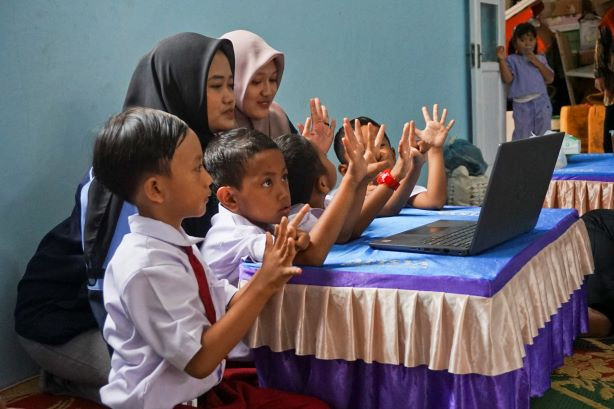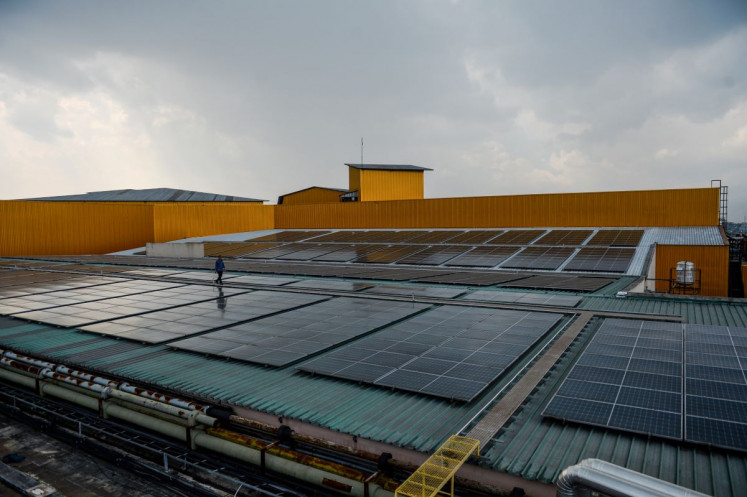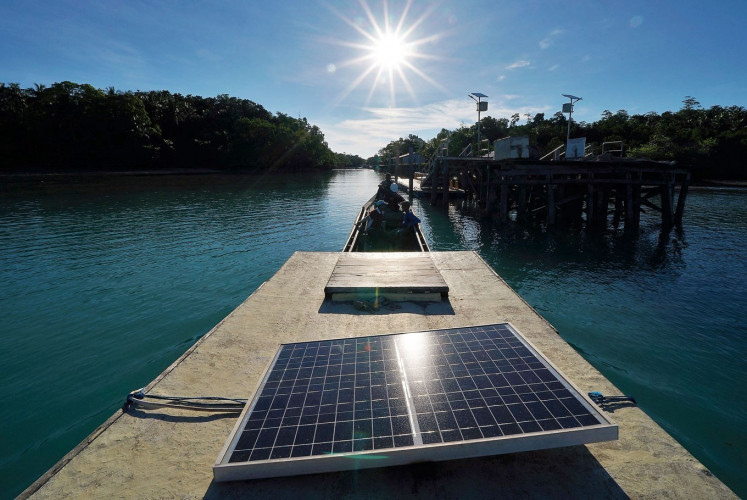Popular Reads
Top Results
Can't find what you're looking for?
View all search resultsPopular Reads
Top Results
Can't find what you're looking for?
View all search resultsAffordable broadband: Measure what matters
Should the issue of costly and slow broadband internet lead to continued limited internet data consumption, the digital divide in Indonesia is likely to widen further.
Change text size
Gift Premium Articles
to Anyone
 Internet schooling: Elementary school pupils in Banteng village, Batang regency, Central Java, accompanied by their teachers, watch on Aug. 8, 2024 YouTube live streaming of education materials during the launch of an internet for villages program initiated by the local government. (Antara/Harviyan Perdana Putra)
Internet schooling: Elementary school pupils in Banteng village, Batang regency, Central Java, accompanied by their teachers, watch on Aug. 8, 2024 YouTube live streaming of education materials during the launch of an internet for villages program initiated by the local government. (Antara/Harviyan Perdana Putra)
We cannot deny the vital role of home broadband in Indonesia's efforts to break free from the middle-income trap (MIT). Home broadband, often referred to as "home internet", encompasses fixed broadband services tailored to address household internet needs.
According to Association of Indonesian Internet Service Providers (APJII) data for 2024, the proportion of Indonesians using broadband internet grew to 79.5 percent early in the year, compared to 64.8 percent in 2018. The data also shows that 74.3 percent of users depend solely on mobile broadband, whereas only 22.4 percent have access to home broadband.
This suggests that despite the growing number of broadband internet users, many people still lack access to high-quality broadband services that are fast, unlimited and affordable. For instance, Indosat's 100 gigabyte (GB) mobile broadband package costs Rp 201,000 (US$12.82), whereas Telkomsel's package costs Rp120,000 for 30 days of usage.
Home broadband, on the other hand, is considerably cheaper. My visit to a home broadband user in Citayam, Bogor, West Java revealed that a household could access 500 GB of internet per month for as low as Rp100,000.
This highlights the greater cost efficiency of home broadband. Typically, home broadband is priced anywhere from Rp 200 to Rp 1,000 per GB, while mobile broadband costs from Rp 1,500 to Rp10,000 per GB depending on the package offered, the operator and the location.
Surveys reveal that the average household internet consumption in Indonesia ranges from 450 to 500 GB per month. With the most affordable home broadband service, a household would spend only Rp 100,000 per month for internet. In comparison, a mobile broadband subscription for the same amount of data could easily reach over Rp 500,000 per month.
The irony lies in the fact that low-income earners often have to pay more for mobile broadband—typically bought on a prepaid basis—while middle- and upper-income earners can access home broadband at a much lower cost.
to Read Full Story
- Unlimited access to our web and app content
- e-Post daily digital newspaper
- No advertisements, no interruptions
- Privileged access to our events and programs
- Subscription to our newsletters
Purchase access to this article for
We accept



Redirecting you to payment page
Pay per article

Affordable broadband: Measure what matters
Rp 35,000 / article
- Palmerat Barat No. 142-143
- Central Jakarta
- DKI Jakarta
- Indonesia
- 10270
- +6283816779933




Your Opinion Matters
Share your experiences, suggestions, and any issues you've encountered on The Jakarta Post. We're here to listen.
Thank You
Thank you for sharing your thoughts. We appreciate your feedback.
Share options
Quickly share this news with your network—keep everyone informed with just a single click!
Gift Premium Articles
to Anyone
Share the best of The Jakarta Post with friends, family, or colleagues. As a subscriber, you can gift 3 to 5 articles each month that anyone can read—no subscription needed!
Continue in the app
Get the best experience—faster access, exclusive features, and a seamless way to stay updated.










